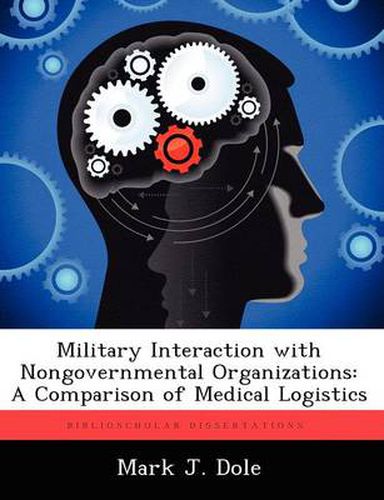Readings Newsletter
Become a Readings Member to make your shopping experience even easier.
Sign in or sign up for free!
You’re not far away from qualifying for FREE standard shipping within Australia
You’ve qualified for FREE standard shipping within Australia
The cart is loading…






This title is printed to order. This book may have been self-published. If so, we cannot guarantee the quality of the content. In the main most books will have gone through the editing process however some may not. We therefore suggest that you be aware of this before ordering this book. If in doubt check either the author or publisher’s details as we are unable to accept any returns unless they are faulty. Please contact us if you have any questions.
The U.S. Army must develop leaders that understand the emerging global trends in which national security depends upon the full spectrum of operations and the relationship with nongovernmental organizations (NGO). By comparing the medical logistics capabilities of the military and private relief organizations, this essay addressed the question: How should U.S. Commanders plan to use military assets to support the medical logistics activities of NGOs in future foreign humanitarian assistance (FHA) operations? Ultimately, this research confirmed that the military has a limited and defined role in relief operations. The military’s contributions to FHA must concentrate on its unique capabilities and seek a rapid transition to civilian authorities. Concerning medical logistics, the difference in missions and scope of operations indicated that the intersection between the military and NGOs is inappropriate except for rare situations. Nevertheless, understanding the goals and capabilities of NGOs is imperative because effective coordination with non-military organizations is vital to humanitarian emergencies, support operations, and stability operations. Detailed research into the procedures of NGOs provided insight into the military planning requirements for future operations and clarified the concepts surrounding military-civilian interaction.
$9.00 standard shipping within Australia
FREE standard shipping within Australia for orders over $100.00
Express & International shipping calculated at checkout
This title is printed to order. This book may have been self-published. If so, we cannot guarantee the quality of the content. In the main most books will have gone through the editing process however some may not. We therefore suggest that you be aware of this before ordering this book. If in doubt check either the author or publisher’s details as we are unable to accept any returns unless they are faulty. Please contact us if you have any questions.
The U.S. Army must develop leaders that understand the emerging global trends in which national security depends upon the full spectrum of operations and the relationship with nongovernmental organizations (NGO). By comparing the medical logistics capabilities of the military and private relief organizations, this essay addressed the question: How should U.S. Commanders plan to use military assets to support the medical logistics activities of NGOs in future foreign humanitarian assistance (FHA) operations? Ultimately, this research confirmed that the military has a limited and defined role in relief operations. The military’s contributions to FHA must concentrate on its unique capabilities and seek a rapid transition to civilian authorities. Concerning medical logistics, the difference in missions and scope of operations indicated that the intersection between the military and NGOs is inappropriate except for rare situations. Nevertheless, understanding the goals and capabilities of NGOs is imperative because effective coordination with non-military organizations is vital to humanitarian emergencies, support operations, and stability operations. Detailed research into the procedures of NGOs provided insight into the military planning requirements for future operations and clarified the concepts surrounding military-civilian interaction.